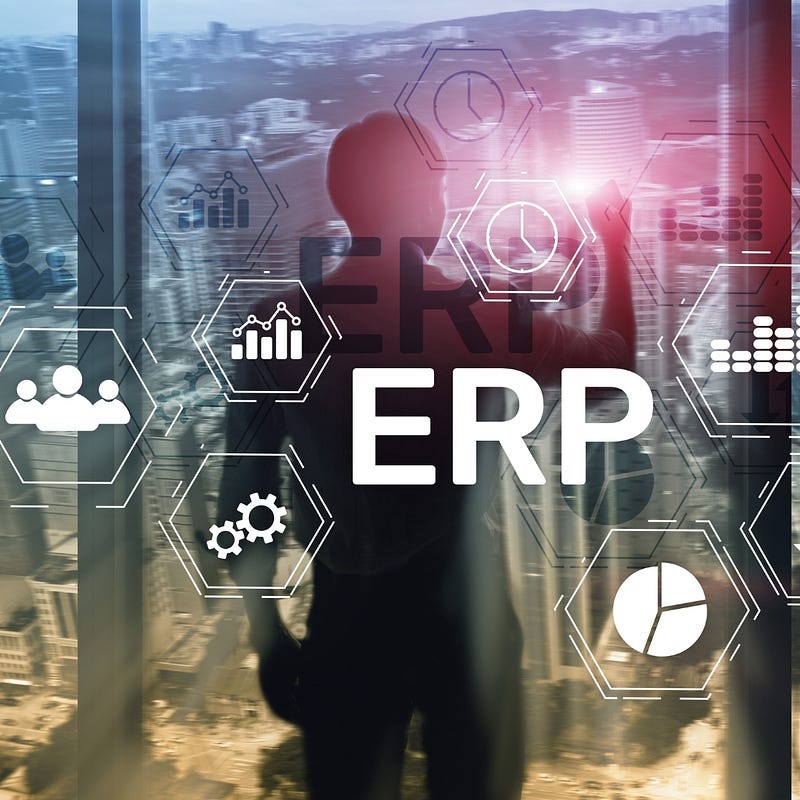How to Choose the Right ERP Solution for Your Business: A Step-by-Step Guide
Selecting the right Enterprise Resource Planning (ERP) solution for your business is a critical decision that can significantly impact your operations and growth. The right ERP system can help streamline processes, enhance productivity, and provide the insights necessary to make better decisions. But with so many options available, how do you ensure you’re choosing the right fit? Here’s a step-by-step guide to help you navigate the process.
1. Define Your Business Needs and Goals

Before diving into ERP software options, it’s important to clearly define what your business needs. Take a step back and assess your current processes — identify areas where inefficiencies exist and where automation or integration could provide improvements. Also, consider your long-term goals. Are you planning to scale operations, expand into new markets, or improve financial reporting? A clear understanding of your business objectives will help you select an ERP solution that aligns with your needs.
2. Evaluate Available ERP Options

Once you know what you need, it’s time to explore the available ERP solutions. There are two main types: cloud-based and on-premise ERP systems.
- Cloud-based ERP: These solutions are hosted on the vendor’s servers, offering flexibility, lower upfront costs, and remote access. They’re ideal for businesses that prioritize scalability, ease of maintenance, and collaboration across multiple locations.
- On-premise ERP: These systems are hosted on your business’s servers, giving you complete control over the software and data. While they require a larger initial investment and ongoing maintenance, they might be preferable for businesses with specific security needs or complex requirements.
Make a list of potential ERP vendors and explore their features, such as customization options, ease of use, and integration with other tools your business relies on.
3. Consider Industry-Specific Needs

Many ERP systems cater to specific industries. For example, manufacturing businesses may need software that integrates with their production processes, while retail companies might require advanced inventory management features. Choose a solution that offers functionality tailored to your industry to maximize efficiency and minimize customization costs.
4. Assess Integration Capabilities

Your ERP system will likely need to work with other tools and software you currently use, such as CRM systems, accounting software, or supply chain management platforms. Ensure the ERP solution you choose can integrate seamlessly with your existing systems, or that it provides easy options for future integrations as your business grows.
5. Test Usability and User Experience

An ERP system is only valuable if it’s easy for your team to use. Take time to test the system with real-world scenarios, and gather feedback from employees who will interact with the software regularly. Ensure the interface is user-friendly, and the learning curve isn’t steep. A solution that’s hard to navigate can lead to inefficiencies and frustration.
6. Consider Total Cost of Ownership
The cost of ERP software goes beyond the initial purchase price. Be sure to account for the total cost of ownership, which includes implementation costs, training, ongoing maintenance, and potential upgrades. Some ERP systems may have lower upfront costs but could require expensive customizations or come with hidden fees. Carefully evaluate the pricing structure to ensure it fits within your budget.
7. Look for Strong Vendor Support
Reliable vendor support is crucial to ensuring the smooth functioning of your ERP system. When evaluating ERP solutions, check the vendor’s customer support options, including training, troubleshooting, and system updates. A vendor with excellent support will ensure minimal downtime and help resolve any issues swiftly.
8. Future-Proof Your Choice
Your business needs will evolve over time, so it’s essential to choose an ERP system that can grow with you. Look for solutions that offer flexibility, scalability, and regular updates to keep pace with emerging trends like artificial intelligence, machine learning, or Internet of Things (IoT) integration. Future-proofing your ERP solution ensures that it continues to meet your needs as your business evolves.
Conclusion
Choosing the right ERP solution for your business requires careful consideration of your goals, budget, and long-term growth plans. By following this step-by-step guide and thoroughly evaluating your options, you can select an ERP system that enhances efficiency, drives growth, and supports your business’s future. Take your time, involve key stakeholders in the decision-making process, and remember that the right ERP system is an investment in your company’s success.





Comments
Post a Comment